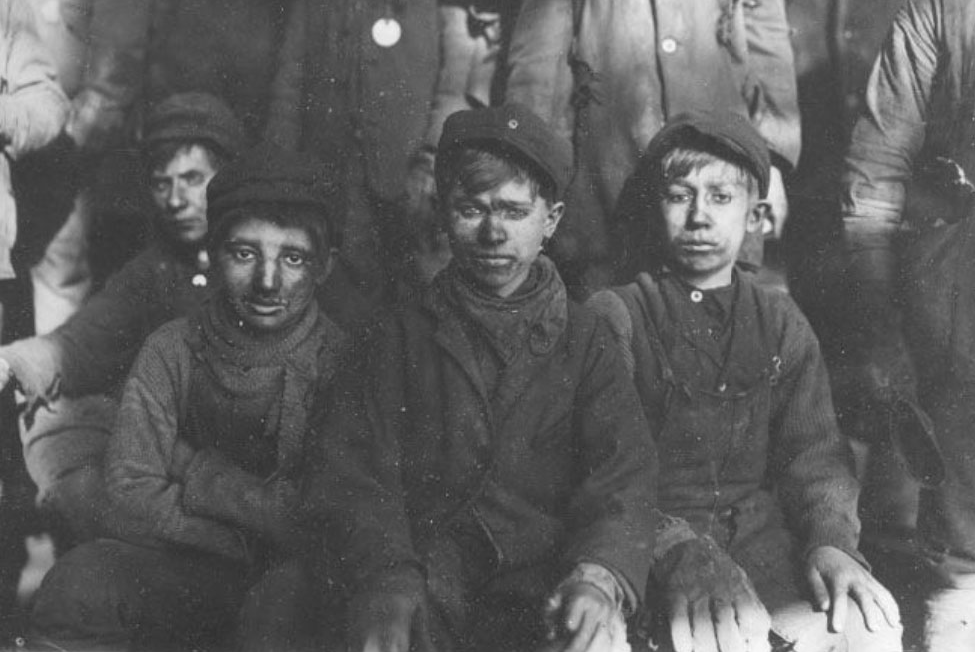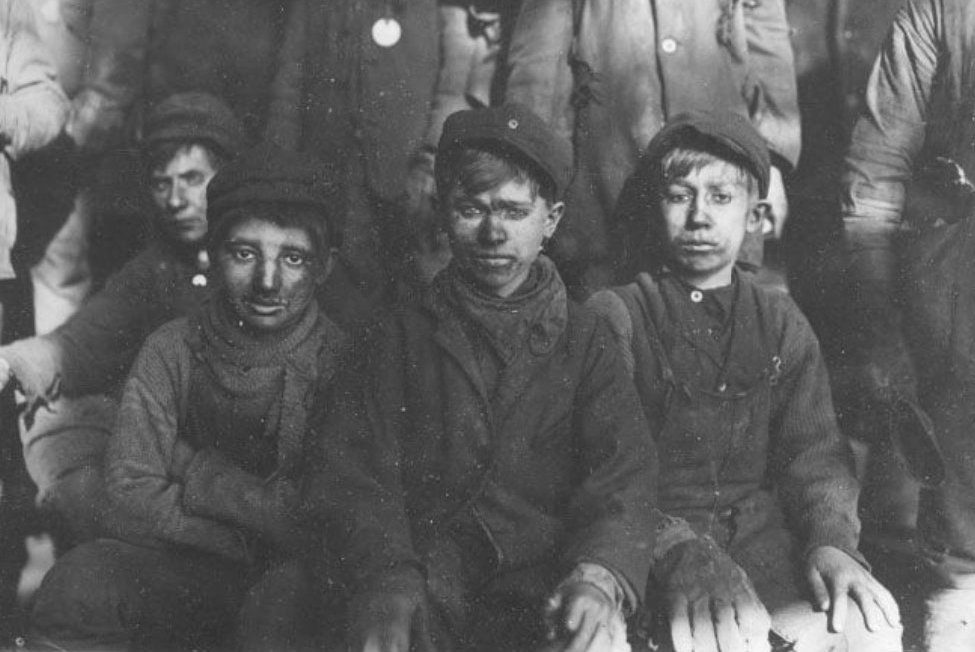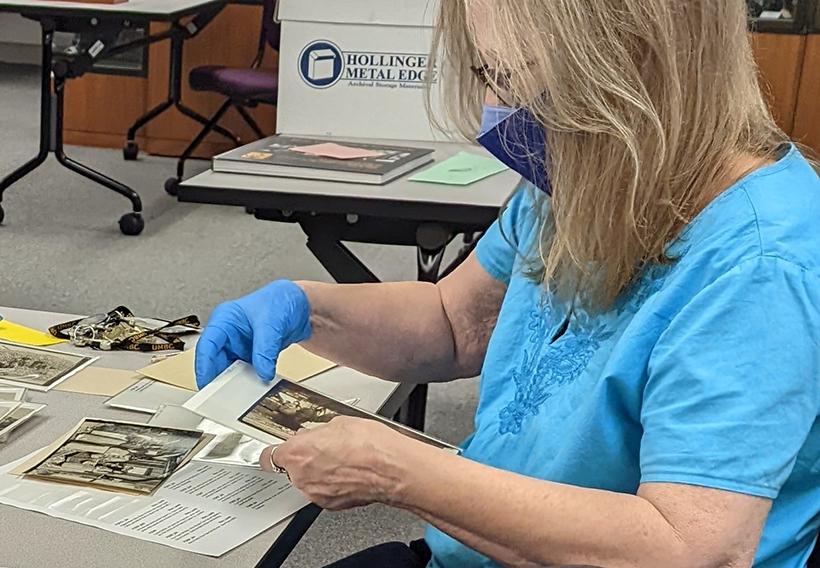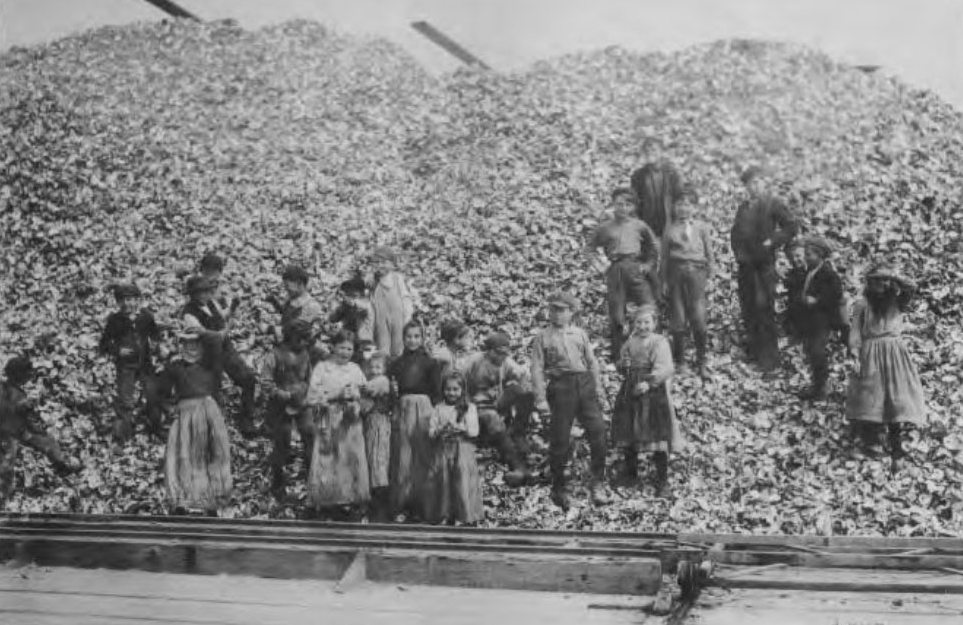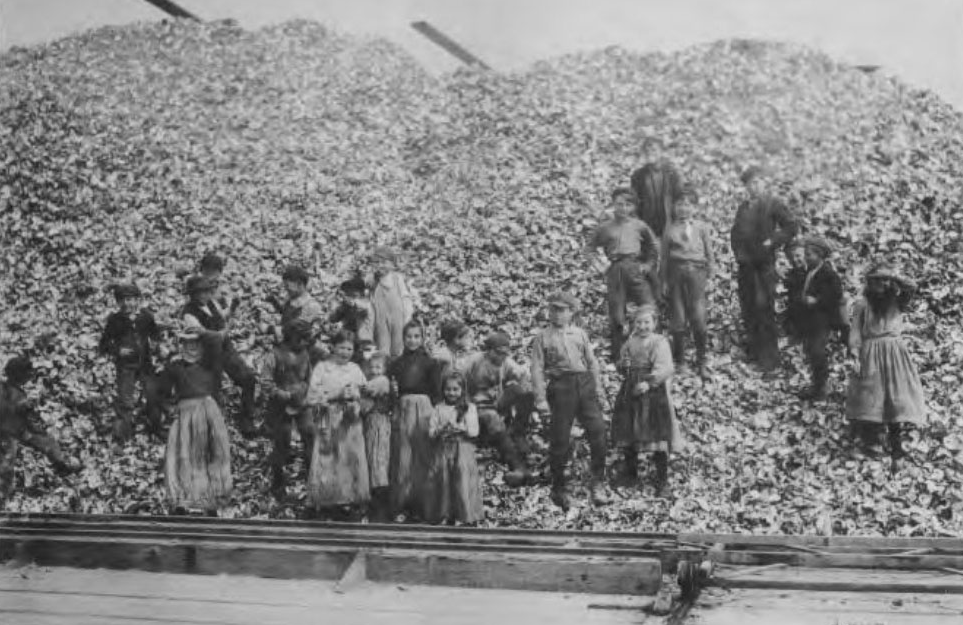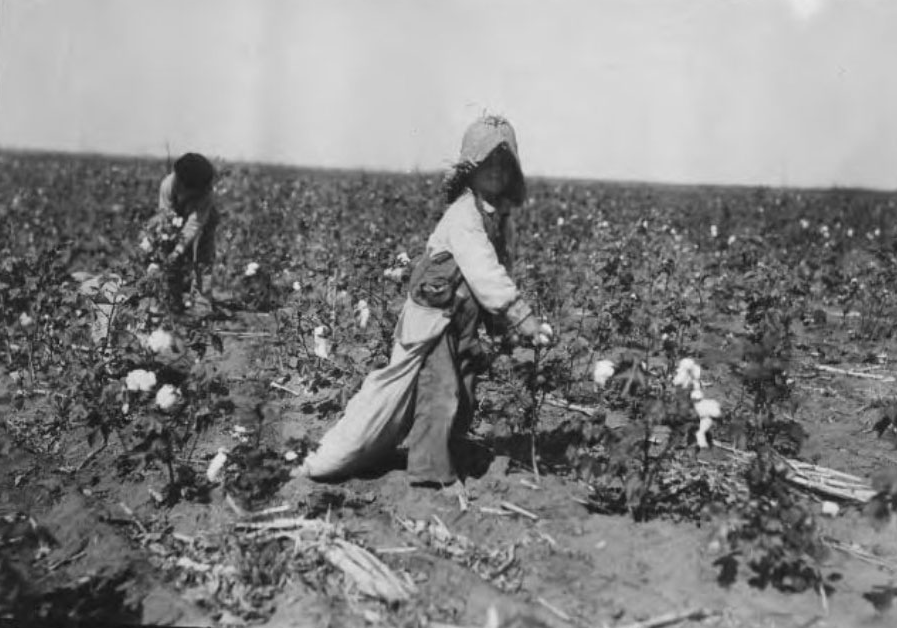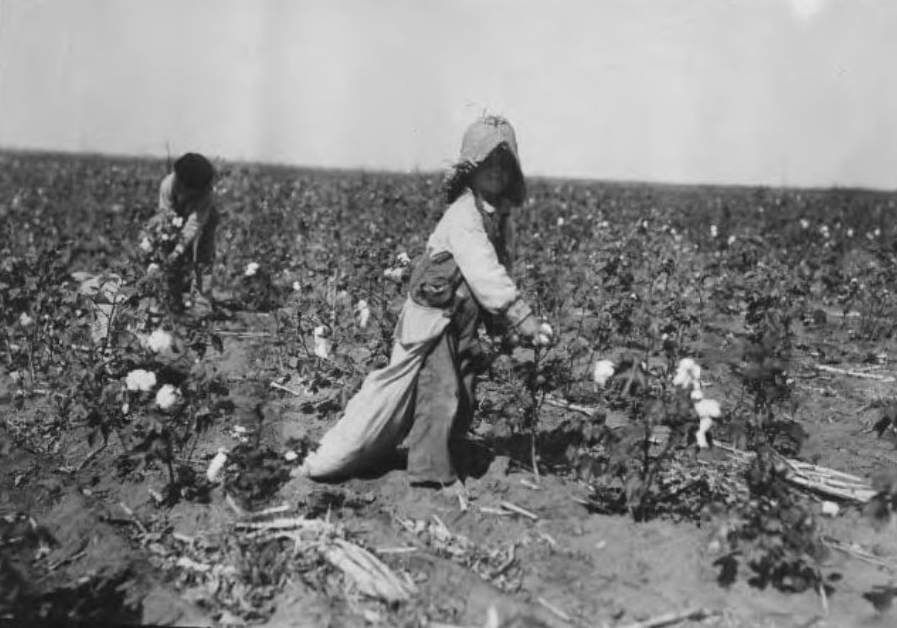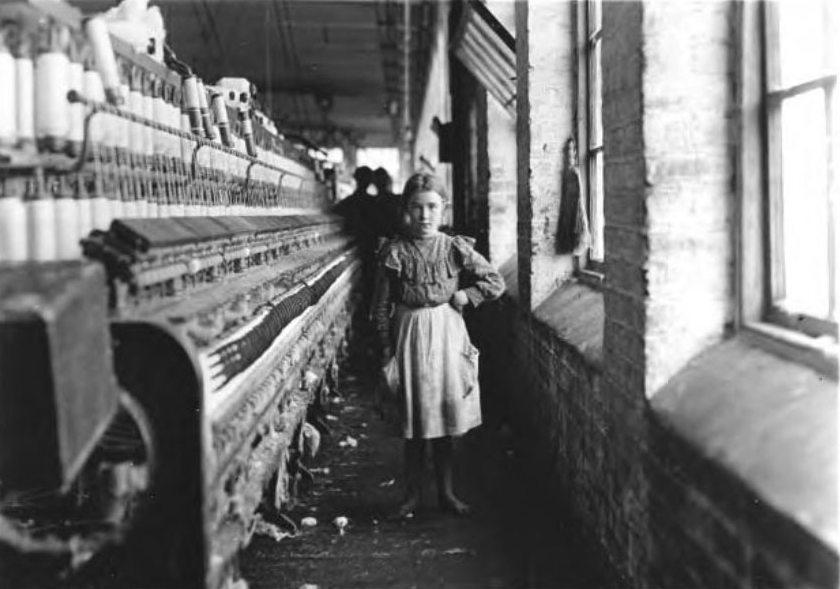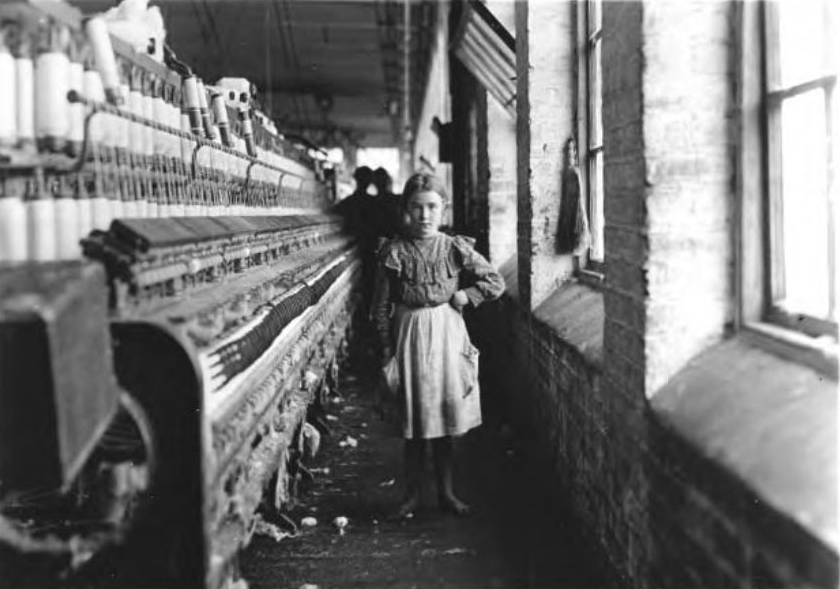Grantee Spotlight: Beth Saunders
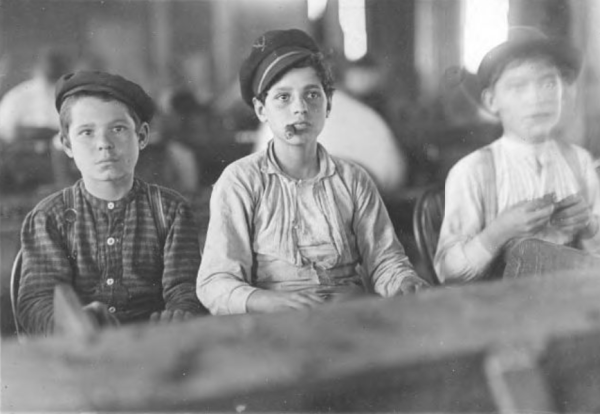
Lewis Hine, Young Cigarmakers in Englahardt & Co., Tampa, Fla, 1909. Gelatin silver print, 5 x 7 in.
The Lewis Hine Collection, Photography Collections, University of Maryland, Baltimore County (P564)

Lewis Hine, Young Cigarmakers in Englahardt & Co., Tampa, Fla, 1909. Gelatin silver print, 5 x 7 in.
The Lewis Hine Collection, Photography Collections, University of Maryland, Baltimore County (P564)
Beth Saunders
Curator & Head of Special Collections
University of Maryland, Baltimore County
The United States’ child labor laws owe much to early twentieth-century photographer Lewis Hine. Best known for his work as an investigative photographer for the National Child Labor Committee from 1908 through 1930, Hine traveled the country photographing the working conditions of children in mines, meatpacking plants, textile mills, farms, factories, and canneries. These images of children engaged in dangerous, long, and backbreaking labor—including his famous “Mill Children” photographs, whose subjects seem to peer across the distance of time—helped galvanize support for child labor reform and the eventual passage of the Fair Labor Standards Act of 1938, which prohibited the employment of minors in most industries.
Madelyn Pollack spoke with Beth Saunders, curator and head of special collections at the Albin O. Kuhn Library of the University of Maryland, Baltimore County, about UMBC’s important collection of Hine photographs, which are being preserved and rehoused with support from an NEH grant.
“Next year, we’re celebrating 50 years of being the stewards of the Lewis Hine Collection, a group of 5,549 photographs made by Lewis Hine while he was working for the National Child Labor Committee. It was acquired by UMBC’s Special Collections department in 1974 as the founding photography collection. We now have over 3 million photographs spanning the entire history of the medium.
“There’s a quality in the photographs of capturing these local histories and individual stories that ends up really resonating with people. Hine was an incredibly successful photographer and was masterful in the way that he composed images. So many of them are individual children looking directly at the camera, which was intentional to provoke that one-on-one connection that generates an emotional response. I think that’s why his images remain so powerful, because you feel like you’re looking through time.
“Right now, we’re seeing a lot of media attention related to contemporary crises around child labor. It is an important moment to look back at Hine’s work in light of the conversations that we're having today about migrant laborers. There is a lot to be learned from going back and engaging with Hine’s images and revisiting that history because his photographs were used as propagandistic tools to get labor reform passed.
“We started work on the rehousing project with NEH funding in 2021 and, as of April 2023, we have accomplished everything we set out to do in the grant proposal. The prints were previously housed in plastic sleeves using adhesive strips to create pockets for the photographs and the caption cards that originally accompanied them. Over time, the adhesives started to migrate, which creates the possibility of discoloration or of the photograph sticking within the sleeves. We wanted to rehouse the entire collection, and now the main goal has been accomplished.
“It didn’t happen on the exact timeline that we hoped it would because we were working during COVID. The biggest challenge was getting the supplies we needed because there were a lot of supply chain delays. It ended up working out in our favor. . . . During that time, when we couldn’t yet rehouse the photographs, we received assistance installing an overhead camera setup. We decided that part of our process in addition to the rehousing would be to photograph all of the versos (backs) of the photographs. One of the reasons that our Lewis Hine photographs are so special is that they’re not mounted. For example, the Library of Congress has a complete set, but they’re all mounted. On our prints, you can actually see the writing on the versos. With digitized images, we can eliminate the need for so much handling when people want to access the backs of the prints.
“In the process of rehousing these photographs, we discovered a number of duplicate prints. Some of the duplicate prints that came out of the project are still being processed, and we’re going to need to study a little bit further to ascertain the value of these duplicate copies. The first question is, Are they really duplicate? The image is the same, but since our collection is particularly interesting because of the versos, is the information recorded on the versos identical or not? Do you get more from having two of them? This is an object of further study for us. This is a really fun example of finding out you had even more research value than you thought and that there might be new information to be found. That’s exciting.
“Our biggest goal moving forward will be to upload the verso photography to our online digital collections because this is one of our most used collections. Researchers who can’t come visit us at UMBC will have access from around the world. One of the really exciting things about the Hine collection is its multidisciplinary nature. Art historians are interested in photography, but it also has political and historical significance. There are a lot of different ways that people approach this particular collection.
“I served as the director of this project, but that means that, in terms of the actual work, I did very little of the actual rehousing. I think the success of this project is due to the people who worked most closely on it: Special Collections Librarian Susan Graham and Library Specialist Robin Martin, and some really wonderful students working with us, Gabe Morrison and Meredith Powers. It took a lot of people’s hard work to make this project successful.”
Read more about the UMBC Lewis Hine Collection at UMBC Magazine.
---By Madelyn Pollack
